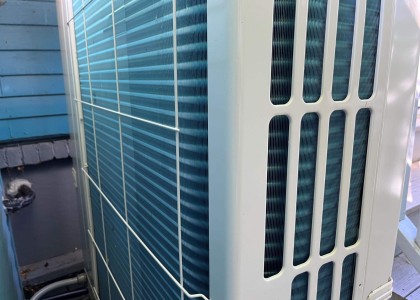A local government can have immediate impact on the energy performance of one of the key facilities under its control by targeting wastewater and water treatment facilities. Wastewater plants and drinking water systems can account for up to one-third of a municipality’s total energy bill (EPA 2009a). These facilities represent a significant portion of controllable energy usage and offer opportunities for cost-effective investments in energy-efficient technologies.
Local governments can advance the implementation of energy efficiency measures at water and wastewater utilities by constructing practical policy and programmatic structures to support utilities throughout the process. While the onus of implementation rests with utility managers, mayors, local government councils, and local agency personnel are key strategic partners needed to overcome barriers. Local governments may require utilities to determine their baseline energy use to understand energy use patterns. Identification of an energy baseline can lead to an implementation plan, which local governments can help finance.
Energy efficiency measures in water and wastewater facilities can deal with the installment of energy-efficient equipment and also the adoption of improved processes. Pumping requires much of the energy used for treating and delivering water. Installing new, more efficient pumping systems and controls and sensors to improve system automation can produce energy savings on the order of 20%, as experience shows in Sheboygan, Wisconsin. Energy is embedded not only in water facilities, but throughout pipe systems as well since leaking pipes for drinking water requires the use of more energy to deliver water to the end user. The inefficient use of water also has energy implications. Projects to fix leaky pipes and improve end-use efficiency can be promoted as both water- and energy-saving investments. Finally, devising a strategy to regularly monitor the energy usage in the water and wastewater infrastructure will allow for continuous improvement.
Stakeholders
Depending on the scope of the initiative, engaging and communicating with the right stakeholders throughout the process of project design, implementation, and evaluation is critical to project success.
Energy Program Leadership
The creation of a leadership team comprised of water utility management and operations personnel is a key step to maintain commitment and buy-in throughout the project lifetime. A team with local government representation or input can also be beneficial to tie in broader energy efficiency initiatives in local government operations and the broader community.
Local Government
Local governments can be a key partner for energy efficiency projects. Depending on the ownership structure of the water utility, the ability of the government to influence action differs. Seldom does a local government mandate energy efficiency measures. In many cases, the local government can play a role in marketing, financing, and providing general oversight for projects. For many local governments, it may be desirable to develop voluntary, multi-sector environmental and energy programs in which energy efficiency efforts at water and wastewater facilities compose one element. For example, in Lexington, Kentucky, the Lexington-Fayette Urban County Government oversees Live Green Lexington, a program that joins environmental policy, water quality, and waste management agencies to provide a set of environmental and energy programs aimed at consumers, businesses, and the public sector.
Utility
Senior management at utilities must have an understanding of how energy efficiency measures align with existing objectives, plans, and programs. Senior managers should know the scope of projects, the cost and labor they will entail, and their roles throughout the implementation process. Facility managers must demonstrate real commitment to energy improvements. They must be able to communicate with and delegate responsibility to operators throughout the utility and ensure their contributions are properly recognized.
Supporting Policies and Regulations
Many wastewater and water treatment facilities are aging and in need of renovation and expansion. For local governments with direct control over facility policies, requiring facility managers to undergo an energy audit in the project design phase can help identify how to improve energy performance along with overall facility performance.
States and local governments can amend existing regulations for public water and wastewater systems to include energy considerations in equipment procurement and improvements. Following the release of the Water and Wastewater Energy Best Practice Guidebook, the Wisconsin Department of Natural Resources encouraged energy considerations to be included in the required project cost-effectiveness calculations. Water and wastewater utilities can also incorporate energy efficiency into existing environmental goals or initiatives.
Program Planning and Design
Data collection, benchmarking, and goal setting can raise awareness of the importance of energy efficiency measures to decision-makers.
Most water and wastewater facilities were constructed decades ago when electricity costs were too low to be of much concern. Facilities and the equipment within them were designed to run continuously, without regard for wasted energy. Utility managers may not understand how to reduce, or even control, energy costs.
Raising awareness within local governments and water and wastewater utilities on the benefits of energy improvements requires a clear demonstration of where waste exists in facilities, which can be accomplished for a low cost through a professional energy audit. Use EPA Portfolio Manager, or a similar tool, to gather and track energy data. NYSERDA’s Web page and the Best Practices Handbook listed below also contain excellent resources on benchmarking and payback analysis.
A clearly communicated strategy with measurable goals helps overcome the aversion to risk.
Even if energy waste is well known at a facility, managers can be averse to implementing new measures, equipment, or processes, which carry with them added burdens on staff or financial risk, real or perceived.
By measuring baseline energy use, identifying cost-effective efficiency measures, and creating a plan to measure and verify savings, the project’s benefits attain a level of certainty that lowers the perception of risk. Following the identification of energy efficiency opportunities, a presentation on the experiences of similar facilities with energy efficiency improvements can develop concrete understanding. Engagement with all levels of utility management and operations as well as with relevant actors in the local government is critical to manage expectations and delegate responsibility. The EPA, NYSERDA, and Focus on Energy resources listed below are excellent guides for strategy development.
Financial incentives for public sector energy efficiency projects can help cover the upfront premium for energy efficiency projects, which is eventually paid back over the project lifetime.
Cash-strapped local governments and water utilities may not be willing or able to invest in the upfront costs necessary for energy improvements.
Incentives offered at the utility, state, and federal level can help cover the upfront cost in the form of grants, rebates, or loans. The use of energy savings performance contracts (ESPCs) is also becoming more widespread and represents a practical solution for local governments with budgets constraining the upfront cost outlay. See Barry (2007) for more information on ESPCs.
Case Studies
A number of existing resources include case studies for further reference. The EPA publication, Evaluation of Energy Conservation Measures for Wastewater Treatment Facilities, includes nine case studies focusing on facility characteristics, energy conservation measures, costs, and results. The California Energy Commission also offers a series of case studies.
Another excellent case study for water and wastewater utilities considering using methane co-generation using micro-turbines comes from an ACEEE Summer Study paper documenting the experience in Essex Junction, Vermont.



